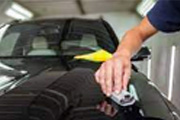How to Protect Your Car from UV Damage and Paint Fading - Vol.496

Your car’s paint isn’t just about aesthetics—it’s also a vital layer of protection against the elements. But over time, constant exposure to sunlight, dust, pollution, and extreme weather can cause the paint to fade, crack, or peel. In this article, we explore how UV rays and environmental stressors affect your car’s exterior—and what you can do to prevent paint damage, especially in sun-intense or tropical regions.
Why Paint Fades: Understanding the Enemies of Shine
- UV Radiation: Breaks down chemical bonds in paint, causing oxidation.
- Heat: Speeds up paint and clear coat deterioration.
- Pollution & Bird Droppings: Acidic contaminants damage protective layers.
- Improper Cleaning: Harsh detergents can scratch or strip clear coats.
Essential Tips for Preventing Paint Fading and UV Damage
1. Park in the Shade Whenever Possible
Direct sunlight is the fastest route to paint degradation. If a garage isn’t available, opt for shaded areas or a UV-resistant car cover.
2. Regularly Wash and Dry Your Car
Weekly washing removes contaminants that cause damage. Avoid air-drying in sunlight.
3. Apply a Quality Wax or Sealant
Waxing creates a protective layer from UV rays and dirt. Reapply every 2–3 months.
4. Use UV-Protectant Spray for Trim and Rubber
Prevents cracking and fading of plastic and rubber components.
5. Cover Your Car’s Interior Too
Sun can also damage dashboards and upholstery. Use sunshades and consider window tinting where legal.
Special Considerations for African Climates
1. Intense Sunlight in Arid and Semi-Arid Zones
Regions like Namibia and Kenya experience rapid paint fading.
2. Coastal Humidity and Salt Exposure
Salt air in coastal cities accelerates dulling of paint.
3. Frequent Rainfall in Tropical Regions
Rain can strip away wax and leave paint exposed to sun damage.
4. Dust and Sand in Desert Regions
Fine scratches from dust wear down your paint over time.
Signs of UV Paint Damage to Watch For
- Fading or Dullness: Paint loses vibrancy.
- Oxidation: Rough, chalky surface.
- Cracking or Peeling: Layers lifting or flaking off.
- Discoloration: Certain colors fade faster (reds, blues).
How to Restore Faded Paint
- Clean the Area: Remove all surface contaminants.
- Polish: Use a compound to restore shine.
- Apply Sealant: Lock in protection after polishing.
- Seek Professional Help: For repainting or ceramic treatment, consult a detailer.
Your car’s paint is its first line of defense—and first impression. With the right care, you can preserve its look and value, no matter the climate. Whether you’re in dry heat, salty air, or tropical rain, these steps help ensure your ride keeps looking as good as it performs.
Do you live in a high-UV or dusty region? Share your sun protection tips in the comments—we’d love to hear from you.